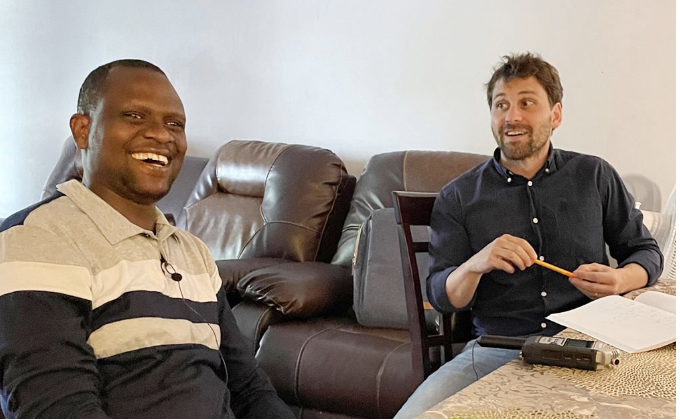

“We have also come to this hallowed spot to remind America of the fierce urgency of now.”
Dr. Martin Luther King, Jr.
(Aug. 28, 1963)
The beginning of a new school year comes with excitement, anticipation, and the opportunity to improve as practitioners. It also comes with a sense of urgency to start the year off strong, with purpose and direction. Aug. 28, 2023, marked the 60th anniversary of the March on Washington, where Dr. King, A. Philip Randolph, Roy Wilkins, other notable civil rights activists, and a quarter million people gathered. It was that day that Dr. King delivered his famous “I Have a Dream” speech. The urgency of now remains as true today as it was years ago. Asking educators (more) simple, yet urgent, questions about their multilingual students has been one way to bring the focus back to the essentials. Instead of jumping ahead to pedagogical practices, what do we need to be reminded of for our practices to be intentional? For multilingual learners, those who are eligible for language support services, this presents a unique opportunity to both build capacity and increase depths of knowledge.
Here are three questions that I ask and assist educators in working through:
- What are the intended outcomes for multilingual students?
In September of 2020, And Justice for ELs: A Leader’s Guide to Creating and Sustaining Equitable Schools was published. During the height of the COVID-19 pandemic, the book, framed around civil rights obligations, added more dialog and inquiry about what we know, do, and/or need to do for multilingual students across the English language teaching (ELT) field. Since then, I have facilitated over 50 book chats with hundreds of educators. I refer to them as book chats since they are less formal than traditional book studies. The conversations that have happened and that continue to happen in those spaces are what resonate with me most. I begin the sessions with an anonymous survey.
Some of the survey questions are what I refer to as simple questions with complex answers. One of the first questions I pose to the group is: Do you know the intended outcomes for multilingual students? This question is met with mixed reactions. The choices for response are “Yes,” “No,” and “Not sure.” This question is followed by: Do other educators know the intended outcomes for multilingual students? Again, the choices for response are “Yes,” “No,” and “Not sure.”
These two simple questions invoke robust conversations around assumptions, common practices, and the need for more dialog across stakeholder groups. Answers to the first question depend heavily on an educator’s role and experience. For example, a primary school teacher may be thinking about foundational literacy skills. A bilingual teacher may be thinking about literacy skills in two languages. Secondary teachers may be thinking about outcomes in terms of a semester or end-of-course exams. District and school leaders usually think about these questions more holistically. They may be thinking about credits earned and graduation rates. My favorite response to this question so far has been from an educator in New Jersey. He replied that he wanted his students to graduate college and career ready with the Seal of Biliteracy. As a follow-up question, I ask if we’ve asked students and their parents/caregivers what outcomes they want. Outside of the usual “all about me” posters, more robust conversations about intended outcomes must be had, especially with students at the secondary level.
Essentially, learning communities must discuss, agree upon, and come to consensus about the intended outcomes. If not, we’ll continue to work in silos without a community-based sense of responsibility for students. - Do you have what you need to best prepare for and support your students?
The old saying you don’t know what you don’t know could not be truer when it comes to this question. The general education educators whom I’ve been meeting with lately are not as informed as they’d like to be when it comes to teaching multilingual learners.
Some teachers have an idea of who their multilingual learners are, while others are surprised that their students are eligible for language support services. I hear “he speaks English just fine” more often than I’d like, too. With all that is available for educators of multilingual students, we still have plenty of opportunities to educate, dispel myths, and build capacity.
One critical piece of information that is missed is the use of English language proficiency data—especially at the beginning of the school year. English language proficiency score reports are often filed away for compliance purposes instead of shared with the educators who teach the students. When they are shared, limited time is spent interpreting the data, cross analyzing, and sharing results with students. To further illustrate this point, I asked a group of teachers if they were evaluated. All hands were raised. I asked if someone came in to observe their teaching. Heads nodded. If the evaluator takes notes and provides them with a summary of what they observed. Finally, if they had an opportunity to discuss their evaluations. Again, I heard unanimous yesses from the group. My last question: Why, then, do we not afford those same opportunities to students? If we serve multilingual students, what is it that we need to know about their multilingualism to best support them?
If various data points, measures of students’ academic ability, are available, what practices must we improve upon to ensure that their teachers have the information they need?
This leads to a follow-up question: Do you know what to ask for and whom to ask? Here’s where things get complicated. This can largely depend upon how information is communicated. Central office personnel, front office staff members at a school, the registrar, liaisons, and ESL/bilingual ed. teachers all may be part of enrolling and identifying students who are eligible for support.
Clarifying that process for stakeholders is beneficial, especially at the beginning of a new school year. - How are you and your students setting goals to support their academic growth and development?
Now that we’ve named and located available data, I inquire about how we are collecting and using it and other pieces of data to support multilingual students.
A common practice at this time of year is to ask students about their learning styles and interests. Are they kinesthetic, visual, or auditory learners, or a combination? What are their hobbies and topics of interest? Inventories like these are helpful, but they don’t necessarily lead to accountability measures for both student and teacher. They do provide insight into how one might learn best (another one of my survey questions), but we should ask more robust questions around the goals the learner has.
When coupled with language learning, the questions can help students take more ownership as autonomous learners.
Some goal-setting questions to consider:
By the end of the [timeframe], I want to be better at…
I want to improve as a target language because __.
My goals
These goals are important to me
because _____.
My teacher can help me reach/attain my goals by _______.
I will commit to ______ to reach/attain my goals.
By setting up beginning-of-the-year systems and structures that include student goal setting, we are better equipped to center on and support students. As stated by Dr. King decades ago, the fierce urgency of now is today.
Ayanna Cooper, EdD, is the Pass the Mic series editor and owner of A. Cooper Consulting. She is the author of And Justice for ELs: A Leader’s Guide to Creating and
Sustaining Equitable Schools (Corwin) and co-editor of Black Immigrants in the United States (Peter Lang).














